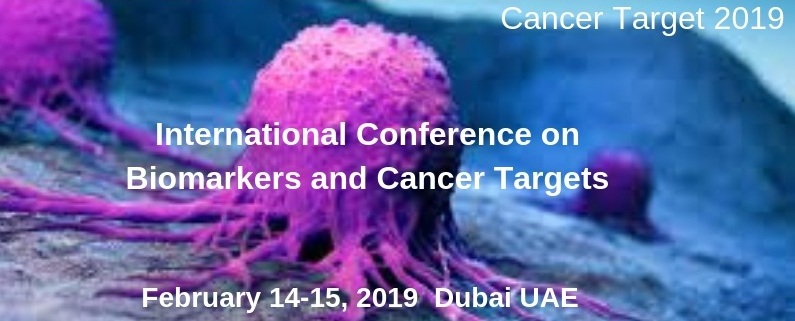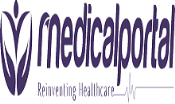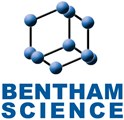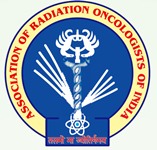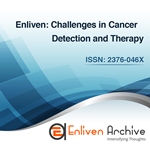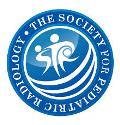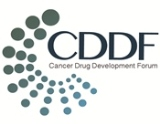Theme: A Lifesaving mission to end cancer forever
Cancer Targets 2019
Cancer target 2019 is organized around the theme: “A Lifesaving mission to end cancer forever”.
ME Conferences welcomes you to the International Conference on Biomarkers and Cancer Targets 2018 to be held on February 14-15, 2018 in Dubai UAE. Cancer Target 2019 is a well organized scientific event consisting workshops, symposiums, exhibitions of oncological instruments, new diagnostic therapies and special sessions for young researchers and students with modern and advance research from top universities, research centers, hospitals.
The unique international on biomarker and cancer target conference 2018 directs towards addressing main issues as well as future strategies s of cancer. This is going to be the largest and most promising international conference where the researcher as well as decision-makers will come to discuss and debate on various aspects of the challenges, risks and investment opportunities throughout the complete information of cancers. The program includes the complete information of cancers including cancer target therapy, Cancer nursing and care, Economic impact on cancer, Biomarker and advance use of biomarkers, the entire medical team involved in patient care ,researcher, Professional, early career individuals and patient advocates who wish to learn principles of tumour immunology and immunotherapy.
ME Conferences organizes 3000+ Global events in conference series every year across the globe with support from 1000+ more scientific societies and Publishes 700 open access journals which contains over 100000 eminent personalities, reputed scientists as editorial board members.
Target Audience:
- Oncologists
- Pathologists
- Hematologists
- Immunologists
- Clinical Researchers
- Nursing
- Cancer Researchers
- Scientists
- Young Researchers
- Students
- Biomarker Associations and Societies
- Business Entrepreneurs
- Training Institutes
- Software developing companies
- Manufacturing Medical Devices Companies
- Data Management Companies
- Pharmaceutical Companies
- Diagnostics Companies
Track 1: Cancer
Cancer is a gathering of sicknesses including irregular cell development with the possibility to attack or spread to different parts of the body. These stand out from benevolent tumours, which don't spread to different parts of the body. Possible signs and side effects incorporate a bump, strange dying, delayed hack, unexplained weight reduction, and an adjustment in gut movements. Tobacco use is the cause of about 22% of cancer deaths. Another 10% are due to obesity, poor diet, lack of physical activity, and excessive drinking of alcohol. Other factors include certain infections, exposure to ionizing radiation and environmental pollutants. In the developing world, 15% of cancers are due to infections such as Helicobacter pylori, hepatitis B, hepatitis C, human papillomavirus infection, Epstein–Barr virus and human immunodeficiency virus.
- Colorectal cancer
- Non-Hodgkin lymphoma
- Prostate cancer
- Lung cancer
- stomach cancer
Track 2: Cancer Biomarkers
Cancer biomarkers can be DNA, mRNA, proteins, metabolites, or processes such as apoptosis, angiogenesis or proliferation. The markers are produced either by the tumor itself or by other tissues, in response to the presence of cancer or other associated conditions, such as inflammation. Such biomarkers can be found in a variety of fluids, tissues and cell lines. "A biological molecule found in blood, other body fluids, or tissues that is a sign of a normal or abnormal process, or of a condition or disease. A biomarker may be used to see how well the body responds to a treatment for a disease or condition. Also called molecular marker and signature molecule.
- Diagnostic (screening) biomarker
- Prognostic biomarker
- Stratification (predictive) biomarker
Track 3: Cancer Biomarkers in Clinical Use
Biomarkers play a key role in the diagnosis and management of patients with cancer, and are important for fulfilling the promise of precision medicine in oncology. However, although numerous biomarkers have been shown to have clinical validity, many have not undergone rigorous testing to demonstrate clinical utility so that they can be appropriately incorporated into clinical care. This review article highlights the characteristics of a good biomarker and the steps required to demonstrate clinical utility, and gives examples of both successful established biomarkers and promising new tissue-based and circulating biomarkers on the horizon.
- Circulating tumour cell
- circulating tumour DNA
- clinical utility
Track 4: Types of Biomarker and Biomarkers
A Biomarker is the organic particle found in blood, other body liquids, or tissues that is an indication of a typical or anomalous process, or of a condition or disease. A biomarker might be utilized to perceive how well the body reacts to a treatment for a malady or condition. Likewise called molecular marker and mark particle. Cancer biomarkers are arranged by their diverse capacities: Biomarkers that Trigger Cells to Grow and Multiply Abnormally, Biomarkers That Support a Treatment's Cellular or Molecular Action, Biomarkers That Disrupt a Treatment's Cellular or Molecular Action, Detecting and Measuring Biomarkers to Develop a Personalized Anticancer Treatment Plan.
- Genomic biomarker
- Transcriptomic biomarker
- Metabolomics biomarker
- Drug activity markers
- Imaging biomarker
- Proteomic biomarker
Track 5: Surgical oncology
Surgical oncology is the branch of surgery applied to oncology; it focuses on the surgical management of tumours, especially cancerous tumours. Surgery is used to diagnose, stage and treat cancer, and certain cancer-related symptoms. Surgeons have performed thousands of procedures and will discuss appropriate surgical options that meet your individual needs. Childhood cancers are different from adult cancers. The Advanced Surgical Recovery Program (ASURE) is designed to help patients recover from surgery more quickly and with fewer complications. Lymphadenectomy. ASURE is intended to improve surgical outcomes and enhance the patient experience before, during and after surgery, while also reducing patients’ overall hospital stay.
- Pancreaticoduodenectomy
- Thyroidectomy
- Appendix surgery
Track 6: Pediatric Oncology
Childhood growth (otherwise called pediatric malignancy) is disease in a kid. Pediatric oncology is the branch of medication worried about the determination and treatment of disease in kids. A pediatric oncologist spends significant time in research and treatment for growths that create in babies, little children, youngsters, youths and adolescents. This is one reason why there is a requirement for pediatric oncologists who are prepared in treating the two youngsters and growth. Numerous pediatric oncologists additionally represent considerable authority in hematology, which is the investigation and treatment of sicknesses identified with the blood. These specialists are in some cases alluded to as pediatric oncologists/hematologists
- Neuroblastoma
- Wilms tumour
- Pediatric Neuro oncologist
- Hepatoblastoma and hepatocellular carcinoma
Track 7: Haematologist-oncology
A haematologist-oncologist is a physician who specializes in the diagnosis, treatment and/or prevention of blood diseases and cancers such as iron-deficiency anemia, hemophilia, sickle-cell disease, leukemia and lymphoma. This physician is trained in haematology — the study of blood — and oncology — the study of cancer. Hematologist-oncologists do not usually treat operable cancers such as prostate cancer, but specialize in treating blood cancers, such as Hodgkins and non-Hodgkins lymphomas, leukemias and multiple myelomas.
- Haemophilia
- Bone marrow disease
- Anticoagulation therapy
- Blood transfusion
Track 8: Gynecologist oncology
A gynaecologist oncologist is a physician who specializes in diagnosing and treating cancers that are located on a woman’s reproductive organs The gynecologic oncologist serves as the captain of a woman’s gynecologic cancer care team. A gynaecologic oncologist is a specialist in obstetrics and gynaecology who by virtue of education and training is prepared to provide consultation on and comprehensive management of patients with gynaecologic cancer and whose present activity includes the practice of gynaecologic oncology in an institutional setting wherein all the effective forms of cancer therapy are available.
- Cervical Cancer
- Vaginal Cancer
- Diagnostic tests
- Ovarian cortex cryopreservation
- Vulvar cancers
Track 9: Orthopaedic Oncology
An orthopaedic (orthopaedic) oncologist is a physician and surgeon who specialize in the diagnoses and treatment of primary benign and malignant tumors of the bones. The Division of Orthopaedic Oncology offers expert care to children and adults diagnosed with tumours and tumour-like conditions of the bone and soft tissue, including bone metastases, sarcomas, benign and cancerous tumors of the bone or soft tissue and pathologic fractures. Treatment of various forms of primary benign and malignant neoplasms of the bones and bony structures of the human body (any cancer which has originated from the bone, as opposed to cancers which originated from other organs and have secondarily spread, or metastasized, to the bones, which is much more common; these specialists deal mostly with primary bone tumors).
- Musculoskeletal Radiologists
- Malignant Bone Tumours
- Ewing's sarcoma
- Chondrosarcoma
Track 10: Breast Cancer
Breast cancer begins in the cells of the breast. A harmful tumour is a gathering of growth cells that can develop into and annihilate close-by tissue. It can likewise metastasize to different parts of the body. Cells in the breast some of the time change and never again develop or act ordinarily. These progressions may prompt non-malignant bosom conditions, for example, atypical hyperplasia and sores. They can likewise prompt non-carcinogenic tumours, for example, intraductal papillomas. Breast cancer screening
- Breast reconstruction
- Lobular carcinoma
- Abortion–breast cancer hypothesis
Track 11: Neuro-oncology
Neuro-oncology is the investigation of cerebrum and spinal string neoplasms, a significant number of which are (at any rate in the end) extremely perilous and hazardous (astrocytoma, glioma, glioblastoma multiforme, ependymoma, pontine glioma, and mind stem tumours are among the numerous cases of these).
- Neuro-oncologists
- Head and Neck Surgery
- Neuropathology Department
- spectroscopic imaging
- Helical Multi Detector CT Scanners
Track 12: Pathophysiology of Cancer
Pathophysiology of cancer incorporates reason for the sickness, conclusion, how the infection creates, instrument and characteristic course of the illness. They additionally manage biochemical highlights, movement, and guess or result of the ailment. Pathology of tumours and other complex issue have experienced an ocean change after improvement of innovations like immunohistochemistry, stream cytometry, and sub-atomic biologic ways to deal with malignancy analysis.
- Genetic changes
- Genomic amplification
- Translocation
- Solid tumour parts
Track 13: Cancer Pharmacology
Cancer pharmacology incorporate investigations of the fundamental mechanism of signal transduction related with cell multiplication and apoptosis, the mechanism of activity of anti-neoplastic specialists, the outline and revelation of new medications, essential components of DNA repair and DNA harm resilience and the advancement of novel techniques for quality treatment.
- Human cancer cell lines
- Genetic manipulation of cancer
- Malignant transformation
- Cancer cell proliferation
Track 14: Cancer Therapeutics
Atomic Cancer Therapeutics will concentrate on fundamental research that has suggestions for growth therapeutics in the accompanying zones: Experimental Cancer Therapeutics, Identification of Molecular Targets, Targets for Chemoprevention, New Models, Cancer Chemistry and Drug Discovery, Molecular and Cellular Pharmacology, Molecular Classification of Tumors, and Bioinformatics and Computational Molecular Biology. The diary gives a production discussion to these rising orders that is centered particularly around disease look into. Papers are stringently looked into and just those that report aftereffects of novel, opportune, and noteworthy research and meet exclusive expectations of logical legitimacy will be acknowledged for production.
- Molecular cancer Therapeutics
- Neurotherapeutics
- Pharmacology and clinical Toxicology
- Therapeutics
- Biomolecules and Therapeutics
Track 15: Homeopathy Cancer Treatment
Homeopathic drugs have proven biological action in cancer; in vitro and in vivo; in animals and humans; in the lower, as well as in the higher potencies. Cancer patients are faced with a life-and-death decision when choosing their treatment. Since most conventional treatments continue to be associated with severe adverse and some- times fatal effects, while homeopathy has been found to be free from such effects, it would seem plausible and worthwhile, even urgent, to step up the research on, and even the provision of, homeopathic treatment of cancer and other diseases.
- Psorinum Therapy of Cancer
- Homeopathic drugs
- Homeopathic Cancer Research
- Beneficial clinical effects of Homeopathic drugs
- Anti-cancer Effects of Homeopathic Drugs
- Research Methodologies and Mechanism of Action
Track 16: Cancer Epigenetics
Cancer epigenetics is the investigation of epigenetic alterations to the DNA of malignancy cells that don't include an adjustment in the nucleotide arrangement. Epigenetic changes might be similarly as vital, or much more critical, than hereditary changes in a cell's change to malignancy. A variety of compounds are considered as epigenetic carcinogens such as arsenite, diethylstilbestrol, hexachlorobenzene and nickel compounds. They result in an increased incidence of tumors, but they do not show mutagen activity.
- DNA binding proteins
- Histone modification
- Genetic mutations
- Tumour suppressor gene
Track 17: Cancer: Lifestyle and Nutrition
Cancer is to a great extent an inherited infection, as though destiny and the family quality pool alone direct your odds of becoming ill. A sound eating routine is fundamental to tumour anticipation, particularly a regimen concentrated on settling on nutritious decisions, favouring natural nourishment, eating with some restraint and preparing foods properly . It's about adjust, control and assortment. By eating the correct nourishment, expending a wide range of supplements and not devouring more than your body requires, you can help decrease your danger of malignancy and different illnesses.
- Control your weight
- Be more active
- Eat healthy foods
- Healthy Lifestyle
Track 18: Cancer Prognosis and Predictive Factor
A prognostic factor is an element of the malignancy (like the extent of the tumour) or a normal for the individual (like their age) that may influence the result. A predictive factor can help foresee if a malignancy will react to a specific treatment. A few medications just work if atoms, (for example, proteins) are on growth cells or inside them. These are some essential prognostic elements identified with the tumour: The sort of disease, The subtype of malignancy in light of the sort of cells or tissue (histology), The extent of the tumour, How far and where the malignancy has spread, How quick the malignancy cells are developing. Important predictive elements incorporate a few sorts of tumour markers, biomarkers and changes to chromosomes (hereditary transformations).
- Human papillomavirus infection
- Adrenal Carcinoma Prognosis
- Lymphoma Prognosis
- Basal Cell Carcinoma Prognosis
- Mucoepidermoid Carcinoma Prognosis
Track 19: Cancer Proteomics
Proteomics advancements are utilized for early discovery and finding of diseases for the improvement of novel restorative operators. Distinguishing proof of biomarker and furthermore the investigation of protein articulation of the disease are examined through proteomics stages. These investigations have prompted the advancement of finding new medications and focused on therapeutics towards the tumour cells. Identification, anticipation, finding and treatment of breast malignancy is presently conceivable with the headways in the field of proteomics alongside the utilization of mass spectrometry. The disclosure of the protein designs has empowered scientists to recognize the disease and disease free-state related with breast disease has been revealed with the improvement of proteomics advancements. This revelation prompts customized treatment for the patients. Proteins communicated or found in the serum, plasma and the tumour cells utilizing the novel procedures give a superior perspective of the heterogeneity of the diseases.
- Genes and protein altered in cancer
- Protein expression of cancer genes
- Tumour biology
- Leukaemia and lymphoma
Track 20: Molecular Epidemiology of Cancer
Cancer Molecular epidemiology is a branch of oncology and epidemiology that focuses on the contribution of potential environmental and genetic risk factors, identified at the molecular level, to the etiology, distribution and prevention of cancer within families and across populations. The goal of molecular epidemiology is to supplement and integrate existing methods. Molecular epidemiology of cancer studies molecular markers of distribution of malignant tumours in the population and their effects on individual risk of developing a disease. Molecular markers can be detected in tissues and biological liquids and characterize individual exposure to carcinogens, biological effect of the exposure, genetic susceptibility to the development of disease, and final result of carcinogenesis. Identification of specific somatic molecular and genetic changes, so-called fingerprints, is very important for the molecular characteristics of a tumour and confirmation of etiology.
- Disease surveillance
- Case series
- Case-control studies
- Prostate cancer screening
- Prostate-specific antigen
Track 21: Cancer Nursing and Care
There are various types of nurse care associated with cancer treatments. Authority medical attendants, ward medical care takers, Community medical care takers, Specialist palliative care medical attendants, Marie Curie Cancer Care Nurses. Authority attendants work primarily in doctor's facilities, however some give mind in the patient's home. They may have some expertise in a particular malignancy for instance bosom, lung, head and neck disease, or a specific treatment, for instance chemotherapy. Community attendants give an extensive variety of nursing care including helping patients when they leave clinic, taking out fastens, wiping wounds and giving out some prescription at home. Authority palliative care medical care takers have skill in overseeing torment and different manifestations, and can offer help for individuals with growth and their families. Marie Curie medical caretakers give hands on mind at home during that time or night, offering the carer a reprieve. They will have exceptional learning of palliative care.
- Anticipatory grieving
- Altered Nutrition: Less than Body Requirements·
- Risk for Fluid Volume Deficit
- Risk for Infection
Track 22: Cancer Diagnosis
There are several methods of diagnosing cancer. With advances in technologies that understand cancers better, there is a rise of number of diagnostic tools that can help detect cancers. Once suspected, diagnosis is usually made by pathologists and oncopathologists and imaging radiologists. Diagnostic testing involves tests and procedures to confirm the presence of disease and identify the correct tumor type, location, extent and stage. Diagnostics plays an important role throughout your cancer treatment it includes Before treatment, During your treatment, After you complete treatment.
- Biopsy
- Sentinel node biopsy
- Endoscopy
- Blood tests
- Bone marrow aspiration
Track 23: Cancer Biopsy
The expulsion of cells or tissues for examination by a pathologist. The pathologist may ponder the tissue under a magnifying lens or perform different tests on the cells or tissue. There are a wide range of sorts of biopsy techniques. The most widely recognized sorts include: (1) incisional biopsy, in which just an example of tissue is evacuated; (2) excisional biopsy, in which a whole irregularity or suspicious zone is expelled; and (3) needle biopsy, in which a specimen of tissue or liquid is expelled with a needle. At the point when a wide needle is utilized, the strategy is known as a center biopsy. At the point when a thin needle is utilized, the methodology is known as a fine-needle goal biopsy.
- Bone marrow aspiration and biopsy
- Endoscopic biopsy
- Needle biopsy
- Tumour Marker Tests
Track 24: Magnetic Resonance Imaging (MRI)
Magnetic resonance imaging (MRI) is a scanning procedure that uses strong magnets and radiofrequency pulses to generate signals from the body. These signals are detected by a radio antenna and processed by a computer to create images (or pictures) of the inside of your body. The MRI scanner is generally shaped like a large, covered box with a tunnel passing through it. A table, on which you lie, slides into the tunnel. Both ends of the scanner are open and will not close. The tunnel has lights in it and sometimes a mirror..
- Real-time MRI
- Interventional MRI
- Medical imaging
- NMR applications
- Diagnostic medicine
Track 25: Factors Associated with Cancer Prevalence
The association between cancer prevalence and race, income, insurance, and education was estimated using the Medical Expenditure Panel Survey data from 1996-2007. The goal of this analysis was to provide some insight into how variations in race and socioeconomic factors influence the prevalence of cancer. This analysis was conducted for any cancer and for the four most common cancer sites i.e lung, colorectal, breast and prostate. Initially, the model was estimated using MEPS data from 2002-2007 to include body mass index, exercise and smoking behaviour as predictors in the model. This data is not available in the MEPS for the prior years. We compared the results of our model with and without these variables and concluded that they did not confound the associations between cancer prevalence and race, income, insurance, and education. Therefore, we dropped these variables from the analysis and were able to expand our data to include the years 1996-2001. This increased the number of persons with cancer in our analysis and was important for our analysis of the four most common cancer sites.
- Cancer-Causing Substances.
- Chronic Inflammation
- Immunosuppression
- Infectious agents
Track 26: Cancer Pharma Industry
Tumour is one of the best wellbeing challenges, and a main source of death in each edge of the world. The worldwide market for Cancer drugs is anticipated to develop twice as quick as that of different pharmaceuticals throughout the following couple of years. Top organizations incorporate Janssen biotech, Takeda oncology, Boehringer ingelheim, Roche, Novartis, Celgene, Johnson and Johnson, and Amgen. The growth business is the most ordinarily profitable business in the USA. It has been seen that, there are 1,665,540 new malignancy cases analysed and 585,720 growth passing in the US in the year 2014. $6 billion of citizen stores are spun through different government organizations for malignancy explore for the most part as the National Cancer Institute . The NCI states that the restorative expenses of disease mind are $125 billion, with the ascent of 39 percent to $173 billion by the up and coming year that is 2020. The most well-known maxim of the growth business is it utilizes an excessive number of individuals and delivers excessively pay to enable a cure to be found.
- Cancer drugs
- Novartis
- Johnson & Johnson
- Cancer research
- National Cancer Institute
Track 27: Economic Impact on Cancer
The financial costs of cancer are high for both the person with cancer and for society as a whole. The Agency for Healthcare research and Quality (AHRQ) estimates that the direct medical costs (total of all health care costs) for cancer in the US in 2014 were $87.8 billion.58% of this cost is for hospital outpatient or doctor office visits, 27% of this cost is for inpatient hospital stays. These estimates are based on a set of large-scale surveys of individuals and their medical providers called the Medical Expenditure Panel Survey (MEPS). One of the major costs of cancer is cancer treatment. But lack of health insurance and other barriers to health care prevent many Americans from getting optimal health care. According to the US Census Bureau, about 29 million people (9%) in the US were uninsured in 2015.The percentage of uninsured ranged from 3% in Massachusetts to 17% in Texas.
- Medical Expenditure Panel Survey
- Large-scale surveys of individuals
- Agency for Healthcare research and Quality
Related Conferences: Cancer Targets Conferences | Biomakers Congress | Cancer Research Events | Oncology and Radiology Meetings | Cancer Stem Cell Conference
- World Conference on Breast and Cervical Cancer, September 27-28, 2018, Abu Dhabi, UAE
- International Conference on Molecular Markers and Cancer Therapeutics, October 8-9, 2018 Dubai, UAE
- 5th World Congress on Epigenetics and Chromosome, October 22-24, 2018 Turkey
- 2nd World Congress on Radiology and Oncology, July 16-17, 2018 Dubai, UAE
- 22nd Global Annual Oncologists Meeting, May 24-25, 2018 Osaka, Japan
- World Haematology and Medical Oncology Conference, May 28-30, 2018 Osaka, Japan
- Global Meeting on Oncology and Radiology, June 1-2, 2018 Osaka Japan
- World Cancer Summit 2018, July 2-3, 2018 Thailand, Bangkok
- 27th International Conference on Oncology Research & Cancer Stem Cells, May 10-12, 2018 Frankfurt, Germany
- 14th International Conference on Leukemia and Hematologic Oncology June 20-21, 2018 Paris, France
- 6th International Congress on Gynecology & Gynecologic Oncology July 23-24, 2018 Rome, Italy
- 29th Euro-Global Summit on Cancer Therapy & Radiation Oncology July 23-25, 2018 Rome, Italy
- 10th Annual Conference on Stem Cell and Regenerative Medicine August 13-14, 2018 London, UK
- 4th World Congress on Medical Imaging and Clinical Research September 03-04, 2018 London, UK
- 3rd International Conference on Tumour & Cancer Immunology and Immunotherapy, September 17-18, 2018 San Diego, USA
- International Conference on Pharmaceutical Oncology July 18-19, 2018 Atlanta, USA
- 4th Annual Conference on Preventive Oncology July 18-19, 2018 Atlanta, USA
- 4th Annual Conference on Gynecologic Oncology July 18-19, 2018 Atlanta, USA
- International Conference on Oncology and Therapeutics September 17-18, 2018 San Diego, USA
- 28th International Conference on Cancer Research and Anticancer Therapies September 17-18, 2018 San Diego, USA
- 2nd Annual summit on Cell Signaling and Cancer Therapy September 19-20, 2018 Philadelphia, USA
- International Cancer Imaging Society Meeting and
- 18th Annual Teaching Course Palais de, France Oct 07-09, 2018, France; 2018 SGO
- Annual Meeting On Women's Cancer - Society Of Gynecologic Oncologists, March 24-27, 2018
- 49th SGO Annual Meeting on Women’s Cancer, March 24–27, 2018, New Orleans, USA
- 11th ESO-EONS MASTERCLASS IN ONCOLOGY NURSING 24-29 March 2018 Nauen OT Gross Behnitz (Berlin area), Germany
- 1st ESO-EONS Eastern Europe and Balkan Region Masterclass in Oncology Nursing
Related Societies:
American Society of Clinical Oncology, European Society For Medical Oncology, International Agency for Research on Cancer, International Society of Geriatric Oncology, International Society of Paediatric Oncology, European Society of Breast Cancer Specialists, European Society of Surgical Oncology
Other Related Societies:
USA: American Cancer Society, American Childhood Cancer Organisation, American Society for Blood & Marrow Transplantation, American Society for Colposcopy and Cervical Pathology, American Society of Clinical Oncology, American Society of Haematology, American Society of Paediatric Oncology ,American Association for Cancer Research, American Brest Cancer Foundation, Hematology/Oncology Pharmacy Association, International Agency for Research on Cancer (IARC)
Europe: European Cancer Organisation, European Cervical Cancer Association , European Head and Neck cancer Awareness, European Hematology Association, European society of molecular imaging, UK Oncology Nursing Society, United Kingdom Association of Cancer Registries, Childhood Cancer Research Group Cancer Focus BASO, European Society of Oncologic Imaging, European Association for Cancer Research, European Society for Medical Oncology, European Society for Medical Oncology, UK Oncology Nursing Children’s Cancer and Leukaemia Group Society, EFB European Federation of Biotechnology, European Diagnostic Manufacturers Association, European Society of Pathology ICGEB, International Center for Genetic Engineering and Biotechnology
Asia Pacific: Chinese Society for Cell Biology (CSCB), Chinese Society of Biochemistry and Molecular Biology, The Hong Kong Society of Biochemistry and Molecular Biology, The Chinese Biological Investigator Society, Australian Society for Biochemistry and Molecular Biology, Chinese Society for Biochemistry and Molecular Biology , Korean Society for Biochemistry and Molecular Biology (KSBMB), The Federation of Asian and Oceanian Biochemists (FAOB), Japan Society for Molecular Science, The Genetics Society of Japan (GSJ), Fungal Molecular Biology Society of Japan, Association for Molecular Pathology (AMP), Molecular Pathology Association of India (MPAI).
Middle East : Moazzara – Emirates Association for Cancer Support, Angels of Mercy Cancer Society, Friends of Cancer Patients Society, Association for Molecular Pathology, Thailand division of International Academy of Pathology, Taiwan Society of Pathology, Indonesian Association of Clinical Pathology and Laboratory Medicine, Romanian Society of Biochemistry and Molecular Biology, Romanian Society of Human Genomics, The Malaysian Biochemical Society, Malaysian Society for Molecular Biology and Biotechnology
Theme: “A Lifesaving mission to end cancer forever”
Scope and Importance
Cancer is the uncontrolled growth of abnormal cells in the body. Cancerous cells are also called malignant cells. Cancer grows out of cells in the body. Normal cells multiply when the body needs them, and die when they are damaged or the body doesn't need them. Cancer appears to occur when the genetic material of a cell becomes changed. This results in cells growing out of control. Cells divide too quickly and do not die in a normal way. Some cancers are more common in certain parts of the world. For example, in Japan, there are many cases of stomach cancer. But in the United States, this type of cancer is less common. Differences in diet or environmental factors may play a role. Cancer affects many people. It is not limited by gender, age, or ethnicity and has no physical barriers within the body. In America alone, as of 2007, 27% of Americans had or were being treated for some form of cancer.
Why it’s in Dubai, UAE:
Cancer target 2018 is going to held in Dubai. Dubai is the largest and most populous city in the United Arab Emirates (UAE). It is located on the southeast coast of the Persian Gulf and is the capital of the Emirate of Dubai, one of the seven emirates that make up the country. Dubai was ranked 44th among the world's best financial cities and the world's 27th richest city in 2012. It is also an international financial center and has been ranked 37th within the top 50 global financial cities and 1st within the Middle East. As indicated by an examination give an account without bounds intensity of urban communities, in 2025, Dubai will have climbed to 23rd place in general in the Index.. Public hospitals in Dubai were first built in the late 1950s and continued to grow with public health initiatives. There are now 28 hospitals in Dubai, 6 public and 22 private, with 3 more major hospitals scheduled to be built by 2025. Tumour examine is basically going ahead in Asian nations close to Dubai, so it is a reasonable goal for Oncology and malignancy gatherings.
Why to attend???
With members from around the world focused on learning about biomarkers and cancer biomarkers, and its advances; this is your best opportunity to reach the largest assemblage of participants from the biomarker community. Conduct presentations, distribute information, meet with current and potential scientists, make a splash with new drug developments, and receive name recognition at this 2-day event. World-renowned speakers, the most recent techniques, developments, and the newest updates in and cancer biomarkers are hallmarks of this conference.
Cancer is a disease in which abnormal cells divide uncontrollably and destroy body tissue. There are more than 100 types of cancer, including breast cancer, skin cancer, lung cancer, colon cancer, prostate cancer, and lymphoma. Symptoms vary depending on the type. Cancer treatment may include chemotherapy, radiation, and/or surgery.
Cancer is a complex medical issue that requires a multidisciplinary approach. This approach is sweeping and ranges from well-being advancement to counteractive action and screening, diagnosis, treatment, restoration and palliative care.
5 Most common cancers in Dubai

-
Cancer is the third leading cause of death in the Emirate of Abu Dhabi. It is the third among nationals and the third among expatriates. It accounts for 16% of total deaths.
-
There were around 427 deaths caused by cancer in 2015, 35% were nationals and 65% were expatriates.
-
44% of death were females and 56% were males
-
The top five Leading causes of death among cancers in men (in order of frequency) are Lung, Colorectal, Liver, Leukemia and Pancreas.
-
The top five Leading causes of death among cancers in Women (in order of frequency) are breast, Colorectal, Leukemia, Ovary, and Lung.
Major Associations
In Dubai
Ernakulam Pravassi Welfare Association
Ananthapuram Non Residents Association
Venjaramoodu Non Resident Malayalee
Dubai Charity Association
Dubai Chamber Of Commerce & Industry
In UAE
Emirates Medical Association
Emirates Society of Hematology
Dubai Health Authority
Middle East cancer consortium
Worldwide
Union for International Cancer Control
International Fanconi Anemia Registry (IFAR)
Armenian Association of Hematology & Oncology
Cancer Association of South Africa
Canadian Cancer Sociey
Society for Paediatric Oncology & Hematology
Chinese Society of Clinical Oncology
Cancer Research UK
Indian Association of blood cancer & Allied Diseases
The Leukaemia and Lymphoma Society of Canada
Leukaemia Cancer Society
Leukaemia & Blood Cancer New Zealand
Korean Cancer Association
Fanconi Anaemia Australia
Leukaemia Foundation of Australia
Indian Cancer Society
Brazilian Lymphoma & Leukaemia Association
Chronic Myelogenous Leukaemia Society of Canada
Children’s Cancer and Leukaemia Group
German Cancer Society
Lymphoma Foundation Canada
Cancer Society of Finland
France Lymphoma Hope
Leukaemia &Blood Cancer, New Zealand
Medical Oncology Group of Australia
Australian & New Zealand Children’s Hematology/Oncology Group
Childhood Cancer Research Group, UK
National Cancer Institute of Argentina
Cancer Society Nepal
Top Universities
In Dubai
Murdoch University, Dubai
Heriot Watt University Dubai Campus
Modul University Dubai
Middlesex University Dubai
Hamdan Bin Mohammed Smart University
Curtin University Dubai
University of South Wales Dubai
Emirates Aviation University
In UAE
Al Ghurair University (AGU)
University of Dubai (UD)
Zayed University
American University in Dubai (AUD)
British University in Dubai (BUiD)
American University in the Emirates (AUE)
Worldwide
University of Chicago, Chicago
University of Toronto, Canada
Washington University in St. Louis
Thomas Jefferson University
National University of Singapore (NUS), Singapore
Indianapolis University “La Sapienza” of Rome, Rome, Italy
University of Wisconsin, Madison-
University of Tokoyo, Japan
Guangxi Medical University, Nanning, China
University of Lyon, France
University Of Leeds
University Of Queensland,Australia
University of Arizona Cancer Center
University of Utah
Georgetown University Medical Center
University of Southampton
University of Pittsburgh
McMaster University
University Of Florida
Vanderbilt University School of Medicine
Wayne State University School of Medicine
University of Alberta
University Of British Columbia
University Of Leicester
University Of Chester
University of Kentucky
University of north Durham
University Of Surrey
University Of Edinburgh
University of Glasgow
University Of Bordeaux, France
Oregon Health and Science University
Knight Cancer Institute
Loyola University Chicago
University of Louisville
University of Toledo
Rutgers University
University Of Calgary
University Of Witaterstrand
University Of Western Sydney, Australia
University of Melbourne
University Of South Australia
University Of New South Wales
Monash University, Australia
University of Milan, Italy
Kyoto University, Japan
The University of Auckland, NZ
University Of Zurich
National Taiwan University
The University of Manchester, UK
Ichan School of medicine, Mount Sinai
Pondicherry University, India
University of phoenix
Griffith University
University Of Exeter
Crimea State Medical University,Ukriane
Heidelberg University
Hackensack University Medical Center
Kyoto University, Taiwan
Osaka University, Japan
Kursk State Medical University, Russia

The market of disease is imparted to indicate steady advancement rate in the midst of the gauge time allotment from 2015 – 2020. This advancement is driven by primary contemplations, for instance, rising transcendence of various contaminations and wide R&D rehearses are advancing over the globe to bring new and more fruitful solutions and plans in the market.
Movement in advancement altered pharmaceutical, monetarily adroit treatment techniques are couple of various parts expected to keep up the improvement of overall malignancy treatment grandstand. Be that as it may, exceptional nature of blood illnesses and growing stringency in the regulatory essentials are a bit of the genuine limitations compelling the advancement of overall tumor treatment grandstand.
The overall market for Oncology prescriptions was surveyed to be $25.8 billion of every 2015. By 2017, the market is depended upon to reach $42.5 billion, creating at a CAGR of 12% in the region of 2015 and 2017. The total overall market for oncology issue pharmaceuticals and diagnostics in 2015 was evaluated at practically $82.3 billion. By 2017, the market is depended upon to reach $99.3 billion, creating at a compound yearly advancement rate (CAGR) of 7.2% in the region of 2015 and 2017. The overall tumor issue publicize segment is assessed at $53.3 billion out of 2015 and is depended upon to reach about $76.7 billion by 2017. The genuine reason behind the low advancement rate is the typical diminishing in the yearly cost of treating disease issue and the patent failures of Lovenox, Plavix, Procrit/Epogen, Aranesp, and Neulasta. In 2010, each one of these drugs together accomplished pay of $32 billion into the overall blood issue publicize.
Oncology Drugs Market Overview:
Worldwide Oncology/Cancer Drugs Market is relied upon to collect $111.9 billion by 2020, enlisting a CAGR of 7.1% amid the estimate time frame 2014 to 2020. Late advance in natural treatments has broadened the size of remedial focuses for treatment of malignancy with the distinguishing proof of tumour cell particular qualities. Immunotherapies/biologics are rising as potential treatments to locate the perpetual cure for different growth sorts. Among different biologics, drugs in light of monoclonal antibodies (mAbs) have increased critical consideration as of late because of their high adequacy.
Worldwide growth drugs advertise represented $78,238.9 million out of 2015. The tumour drugs advertise is driven by the developing predominance of different sorts of malignancy, expanding interest of organic and focused on sedate treatments, ceaseless patent expiry of key disease drugs and the rising effect of biosimilars. Be that as it may, the high cost of medication advancement, the danger of disappointment and the unfavourable impacts of tumour tranquilize treatment, especially chemotherapy, prevents the market development. Created countries have executed strict controls for the plan and improvement of disease drugs. USFDA and European Union have embraced noteworthy activities to fuel the development of the malignancy drugs advertise by giving pre-showcase endorsement to potential medications under clinical improvement. Asia-Pacific and LAMEA are promising districts for leading clinical trials due an extensive populace base and the minimal effort of clinical trials when contrasted with North America and Europe. In any case, progression of disease sedate research attributable to organic/directed treatments and customized prescriptions hold promising open doors for pharmaceutical, bio-pharmaceutical and biotechnology organizations occupied with creating malignancy drugs.
World’s Top Ten Cancer Drugs by 2020
As indicated by the World Health Organization, around 8.2 million individuals bite the dust from disease consistently and it includes an expected 13% of all passing around the world. It is likewise anticipated by the WHO that there will be a 70% expansion in new instances of tumour in the following two decades. Luckily, numerous pharma and biotech organizations are currently concentrating on this need.
A 2016 measurable report from Statista has shown the anticipated best 10 oncology drugs worldwide by 2020. The medications are positioned by income. The rundown is relied upon to be going by Revlimid, a disease tranquilize made by U.S.- based organization Celgene, determined to produce five of the main six malignancy sedates by 2020. Here are the best oncology solutions in detail.
Revlimid (Celgene) Generic Name: Lenalidomide Projected Sales in 2020: $10,110 Million, Imbruvica (AbbVie/J&J) Generic Name: Ibrutinib Projected Sales in 2020: $8,213 Million, Avastin (Roche) Generic Name: Bevacizumab Projected Sales in 2020: $ 6,733 Million, Opdivo (BMS) Generic Name: Nivolumab Projected Sales in 2020: $ 6,201 Million, Xtandi (Medivation & Astellas) Generic Name: Enzalutamide Projected Sales in 2020: $5,700 Million, Rituxan (Roche) Generic Name: Rituximab Projected Sales in 2020: $5,407 Million, Ibrance (Pfizer) Generic Name: Palbociclib Projected Sales in 2020: $4,722 Million, Perjeta (Roche) Generic Name: Pertuzumab Projected Sales in 2020: $4,669 Million, Herceptin (Roche) Generic Name: Trastuzumab Projected Sales in 2020: $4,573 Million, Keytruda (Merck) Generic Name: Pembrolizumab Projected Sales in 2020: $3,560 Million

Conference Highlights
- Cancer
- Cancer Proteomics
- Cancer Biomarkers
- Cancer Biomarkers in Clinical Use
- Pediatric Oncology
- Haematologist-oncology
- Gynecologist oncology
- Orthopaedic Oncology
- Breast Cancer
- Neuro-oncology
- Pathophysiology of Cancer
- Cancer Pharmacology
- Cancer Therapeutics
- Cancer Epigenetics
- Cancer: Lifestyle and Nutrition
- Cancer Prognosis and Predictive Factor
- Types of Biomarker and Biomarkers
- Surgical oncology
- Molecular Epidemiology of Cancer
- Cancer Nursing and Care
- Cancer Diagnosis
- Cancer Biopsy
- Magnetic Resonance Imaging (MRI)
- Factors Associated with Cancer Prevalence
- Cancer Pharma Industry
- Economic Impact on Cancer
- Homeopathy Cancer Treatment
To share your views and research, please click here to register for the Conference.
To Collaborate Scientific Professionals around the World
| Conference Date | February 14-15, 2019 | ||
| Sponsors & Exhibitors |
|
||
| Speaker Opportunity Closed | |||
| Poster Opportunity Closed | Click Here to View | ||
Useful Links
Special Issues
All accepted abstracts will be published in respective Our International Journals.
- Journal of Cancer Science & Therapy
- Journal of Integrative Oncology
- Journal of Carcinogenesis & Mutagenesis
Abstracts will be provided with Digital Object Identifier by

